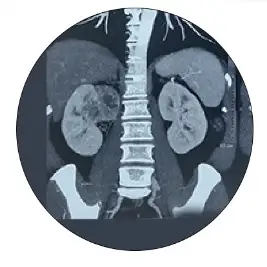Partial Nephrectomy for Hilar Renal Tumor in Young patient
Young patient presenting with incidentally detected right-side renal tumor on sonography. Diagnostic Findings: CT scan revealed an aggressive tumor extending toward the hilum, (The neck of the kidney where blood supply enters.) Tumor close to the hilum, posed challenges for its removal while preserving the healthy part of the kidney. Treatment Decision: Removal of the…



